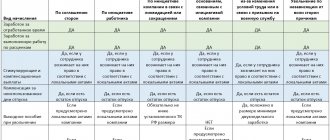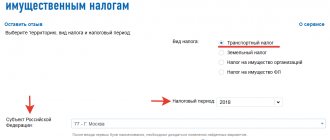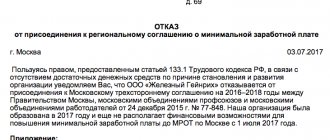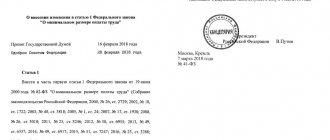Northern allowances and the regional coefficient serve to cover the increased material and physiological costs of citizens living and performing work in the North. When is the regional coefficient paid? How to determine its value? Find out from the article about its size and calculation.
Also see:
- Northern surcharge: what is it and how is it calculated
- How to find out the size of the northern surcharge: calculation examples
Legislative basis for the application of the regional coefficient
increased wages to employees employed in regions with difficult climatic conditions (Part 2 of Article 146 of the Labor Code of the Russian Federation). At the same time, the state establishes the minimum amount of additional payments to those working in such territories (Article 148 of the Labor Code of the Russian Federation).
In order to provide citizens with increased payments in regions with extreme natural environments, a regional coefficient and a northern salary supplement are used (Article 315 of the Labor Code of the Russian Federation).
According to Art. 316 of the Labor Code of the Russian Federation and Art. 10 of the Law of the Russian Federation of February 19, 1993 No. 4520-1, the size of the regional coefficient and the mechanism for its application are developed and approved by government bodies of the Russian Federation. In addition, these articles secure the right of regional authorities to establish, at the expense of local budgets, its increased value compared to the level approved centrally.
In the absence of a modern regulatory framework, legislative acts adopted back in the days of the USSR are used. But provided that they do not contradict the norms of the Labor Code of the Russian Federation (Article 423 of the Code).
As a result, the size of regional coefficients is currently regulated by a number of documents:
- Resolution of the State Committee for Labor of the USSR, All-Union Central Council of Trade Unions dated 09/04/1964 No. 380/P-18 - regarding coefficients for non-production industries;
- various resolutions of the State Committee for Labor of the USSR, the Secretariat of the All-Union Central Council of Trade Unions - for certain sectors of industry, agriculture and transport;
- resolutions of the Government of the Russian Federation - regarding the establishment of regional coefficients in certain territories;
- resolutions of regional authorities - approving an increased size of the regional coefficient in certain areas.
KEEP IN MIND!
currently no .
Commercial business entities are given the right, at their own expense, to establish in a collective agreement/local acts on remuneration a higher level of coefficient compared to the legally approved level (Article 135 of the Labor Code of the Russian Federation and letter of the Ministry of Labor dated November 26, 2012 No. 11-4/660). However, in any case it cannot be lower than the size specified in regulations.
The list of currently used regional coefficients is given in the tables below.
TABLE OF PARADISE. RATIOS FOR MANUFACTURING INDUSTRIES
TABLE OF PARADISE. RATIO FOR NON -PRODUCTION INDUSTRIES
In addition to the Far North, Siberia and the Far East, the regional coefficient has been established for some arid, high-mountain and desert territories of the Russian Federation.
TABLE OF PARADISE. COEFFICIENTS FOR SPECIAL TERRITORIES
Areas that are equated to the regions of the far north: list
In the vast territories of Russia, some subjects are equated to regions of the Far North. This is, first of all:
- Primorsky and Perm Territories.
- Khabarovsk and Krasnoyarsk territories.
- Sakhalin region.
- Karelia and the Komi Republic.
- Islands of the Okhotsk and Bering seas.
- Chukotka region, along with the Yakutsk region and Kamchatka.
- Murmansk and Magadan region.
- Arkhangelsk, Tomsk and Tyumen regions.
It is worth noting that the regions of the Far North, together with similar ones, are usually characterized by very difficult climatic conditions, which affect the health of the citizens living here. And therefore, the country’s legislation provides for various benefits with preferences expressed in the provision of additional leave, salary bonuses, the use of regional increasing coefficients, etc.
How is the regional coefficient calculated?
The Government of the Russian Federation has not issued a single regulatory act regulating the use of the regional coefficient when calculating employee salaries. In this regard, one should be guided by old legislative norms, including those adopted in the USSR, and which do not contradict the current provisions of legal acts on labor law.
IMPORTANT!
The regional coefficient is established for the territory where work is performed (location of the workplace) regardless of the region where the employer is located (subparagraph “b”, paragraph 2 of the explanations of the State Committee for Labor of the USSR, the Secretariat of the All-Union Central Council of Trade Unions dated November 11, 1964 No. 15/30).
EXAMPLE
The employee is registered in the parent organization in Moscow, but actually performs work in the branch in Novosibirsk. He is required to apply the coefficient set for Novosibirsk.
a traveling remains unresolved . If, in this case, the employee spends most of the time on the road in the territory where the coefficient is established, it should be accrued . In the case where an employee, in the course of his work, constantly moves between territories with different coefficients, and it is not possible to identify the exact time of his stay in a particular region, he should probably use:
- coefficient of the territory to which he regularly returns;
- or where he spends most of the time.
The application of the regional coefficient depends only on the region where the work is performed and begins from the first day of employment of the employee in the relevant territory (Review of the Armed Forces of the Russian Federation dated February 26, 2014). This provision also applies to those working on a rotational basis (paragraph 1, 2, part 5, article 302 of the Labor Code of the Russian Federation) and part-time workers (part 3, article 285 of the Labor Code of the Russian Federation).
Northern coefficient for temporary and seasonal employees and shift workers
It is important to find out in advance how the regional coefficient for the salaries of shift workers is calculated. According to Article No. 302 of the Labor Code, the northern regional coefficient must be taken into account when calculating the wages of seasonal workers as well as temporary workers who travel to the regions of the North from other territories of the country to perform activities on a rotational basis. Details on the calculation of salaries of workers employed on these lands are reflected in Article No. 129 of the labor legislation.
How to calculate the regional salary coefficient
The entire actual salary of the employee for the performance of his official duties is increased by the district coefficient (clause 1 of the clarification, approved by Resolution of the Ministry of Labor dated September 11, 1995 No. 49, paragraph 4 of the letter of the Ministry of Health and Social Development dated February 16, 2009 No. 169-13).
The regional coefficient is calculated using the formula:
| FOTsk = FOT × Rk |
Where:
- FOTsk – salary taking into account the regional coefficient;
- Payroll – total monthly earnings;
- Rk – regional coefficient.
The composition taken into account when calculating wages for the month includes :
- constant payments for the actual amount of work performed - salary, hourly rate, piece rate;
- incentive payments, including monthly, quarterly, annual bonuses, additional payments and allowances;
- payments related to the work schedule: overtime, extra pay for working on days off, extra pay for working at night, for working in hazardous conditions;
- other accruals provided for by the company’s remuneration system and recorded in its local regulations.
The following are not taken into account as part of the salary on which the coefficient is calculated:
- the amount of the northern allowance;
- one-time bonuses that are not related to the performance of work and are not included in the remuneration system operating in the company and enshrined in local regulations;
- payments based on average earnings during periods of absence from work (vacation, sick leave, business trips), as well as accrued for downtime;
- financial assistance and field allowance;
- compensations intended to reimburse costs in connection with the performance of labor duties: daily allowance, shift allowance, payment for meals.
is not charged for sick leave, vacation or business trips, since it is already taken into account as part of the average earnings for these purposes.
When calculating sick leave in the minimum amount, there are situations when it is necessary to calculate the regional coefficient for the minimum wage.
IMPORTANT!
In regions where a regional coefficient has been established, wages must be no lower than the minimum wage along with the coefficient accrued to it (Resolution of the Constitutional Court of the Russian Federation dated December 7, 2017 No. 38-P).
EXAMPLE
An employee in Yekaterinburg was accrued for the month:
- salary – 10,000 rubles;
- additional payment for hazardous working conditions – 400 rubles;
- bonus at the end of the month - 20,000 rubles.
Calculate the salary taking into account the regional coefficient.
In Yekaterinburg, the regional coefficient is set at 1.15. Then we get:
(10,000 + 400 + 20,000) x 1.15 = 30,400 x 1.15 = 34,960 rubles.
IMPORTANT!
Only the regional coefficient can be included in labor costs for income tax purposes within the limits specified in legislative acts. All amounts in excess of the amounts specified in them, fixed in employment contracts and local acts of the organization, are made from the company’s net profit (Article 316 of the Labor Code of the Russian Federation, letter of the Ministry of Finance of the Russian Federation dated December 8, 2010 No. 03-03-06/1/764, dated March 24. 2009 No. 03-04-06-02/23).
Calculation example
Let's say Ivanov I. is employed in a mining company in the Khabarovsk Territory. His salary is thirty thousand rubles. His salary also includes an incentive payment for the intensity factor and achievement of high performance in the amount of six thousand. Among other things, this month he had a seasonal part-time job, in which he received fifteen thousand rubles. His actual salary ended up being 30 thousand plus 6 and plus 15, which equals 51 thousand rubles.
The coefficient for the Khabarovsk Territory is 1.2. Ivanov’s salary with him: 51 multiplied by 1.2, as a result we get 61,200 rubles. After using taxation, this employee will receive: 61,200 minus thirteen percent (53,244 rubles).
Let's give another example. Let's say Petrov works in Norilsk. His salary this month is 45 thousand rubles. He also worked on holidays and night shifts, after which he went on sick leave for two whole days. His monthly salary will be 45 thousand; sick leave - two days - will be three thousand; night - two eight hundred, and holiday - four thousand.
The coefficient for the Krasnoyarsk Territory, exactly like for Norilsk, is 1.80. The regional indicator is calculated on actual wages, that is, directly on salary and additional payments. In this case: 45 thousand plus 2.8 plus 4, we get 51,800 rubles. We calculate the regional coefficient: multiply 51,800 by 1.80 and get 93,240 rubles. As a result, Petrov’s actual profit for the month is 93 plus 3, which comes out to 96 thousand minus thirteen percent - that’s 83 thousand rubles. Now we will find out when the RK is not used in relation to employees.
Let's sum it up
The regional coefficient is calculated for work in difficult climatic conditions. The use of the coefficient depends only on the place where the work is actually performed: if a person works in an area with a coefficient, then it is calculated from the very first day.
Difficulties may arise when calculating the regional coefficient for employees with a traveling nature of work. The detailed procedure is not specified in official documents. Therefore, when calculating the coefficient when traveling, one should proceed from the logic of each specific case.
Read also
11.11.2019
What are the northern allowances for state employees?
Additional guarantees within the framework of establishing wage supplements are established in relation to persons under the age of thirty. They are paid the increase in full, starting from the first day of activity in organizations that are financed from the budget of the municipality and the given territory.
Thus, according to the law, persons who are under the age of thirty and have lived in the northern regions for a total of at least five years are paid a percentage increase in wages in full, starting from the very first day of work.
The sizes of regional coefficients for the Far North and the procedure for their application for calculating wages of employees of organizations located in these territories are established by the Government.
Benefits and guarantees
In addition to the increased salary, thanks to different coefficients and accruals, residents working in the Far North have government benefits:
- Additional leave, which is paid by the employer - 24 days for the most severe regions and 16 for milder ones.
- Compensation for transport to the holiday destination and back, because due to the significant distance from other regions, transport tickets can be very expensive.
- If there is a medical certificate, the employee can travel free of charge to another city where the necessary examination or treatment will be carried out.
- Shorter work week.
- Parents can take additional paid days off for the period when the child enters school. In addition, every month parents have the right to take one day off at their own expense.
- Housing subsidies.
- Such workers retire earlier: with maximum work experience, men will retire at 55, and women at 50.
It is very difficult to live and work in such harsh conditions, so the state is trying to do everything possible to improve the lives of its citizens in such difficult conditions.
Significant salary increases and various benefits can make life in such difficult places more pleasant.
You can learn more about regional coefficients from the video:
Control by workers
Checking how the salary was calculated with the regional coefficient is no less popular among workers than rechecking maternity benefits. The Internet is replete with not only all kinds of calculators, but also explanations posted:
- employment centers;
- branches of the Pension Fund and the Social Insurance Fund.
At the same time, we cannot talk about the consistency of approaches to the interpretation of the application of the regional coefficient. For example, the use of the northern coefficient when calculating wages was suddenly sharply revised in 2021. Thus, according to the resolution of the Presidium of the Supreme Court dated No. 4-ПВ17, the minimum wage should be increased by the specified coefficient for those who work in:
- regions of the Far North;
- areas equated to regions of the Far North;
- areas with special climatic conditions.
The change occurred after litigation, which intensified after the promulgation of the resolution of the Constitutional Court of the Russian Federation No. 38-P. It was this resolution that revealed the constitutional and legal meaning of the provisions of Articles 129 and 133.1 of the Labor Code of the Russian Federation, including the regional coefficient.









